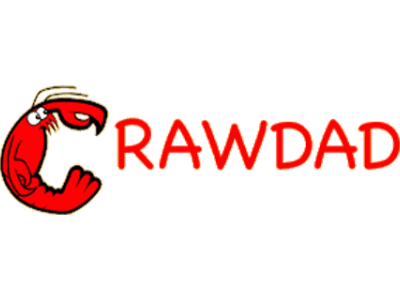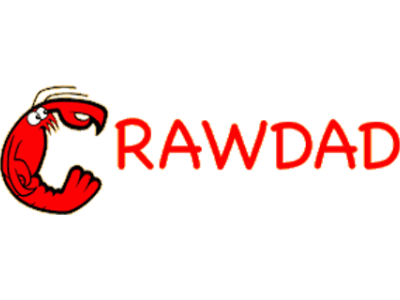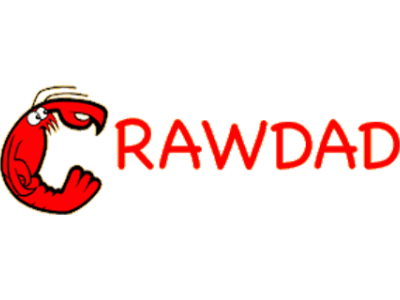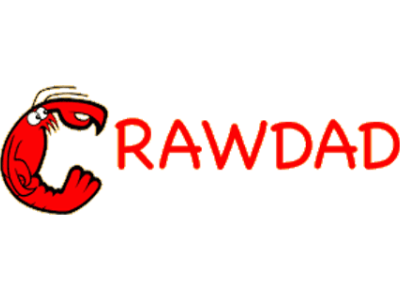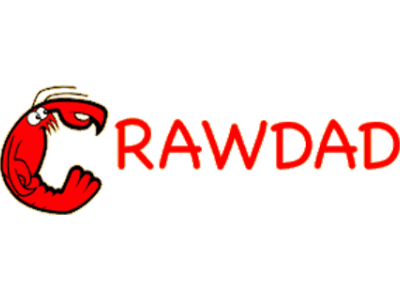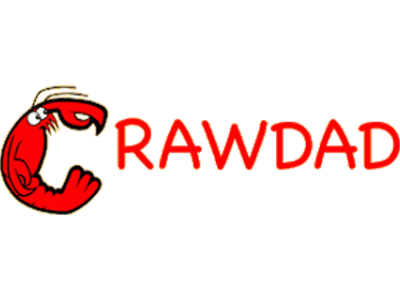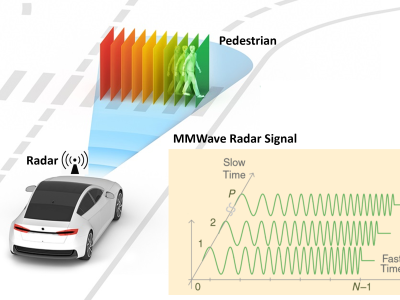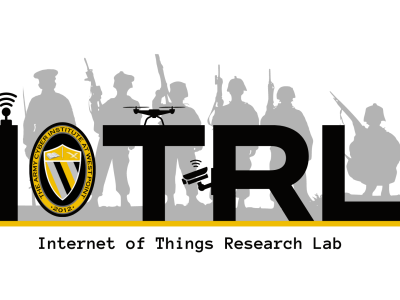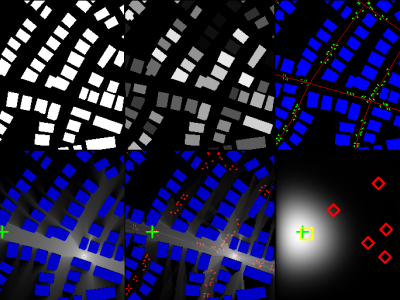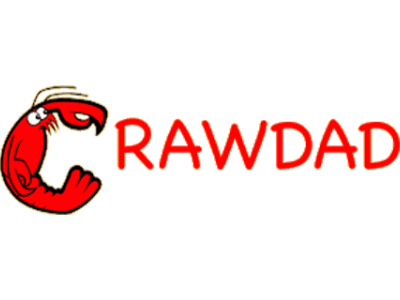CRAWDAD nottingham/cattle
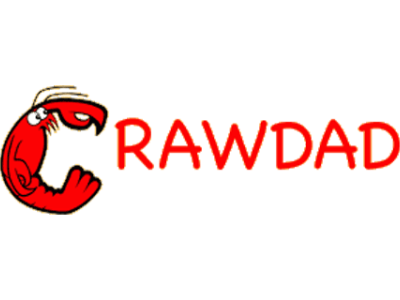
- Citation Author(s):
-
Bartosz WietrzykMilena Radenkovic (University of Nottingham)
- Submitted by:
- CRAWDAD Team
- Last updated:
- DOI:
- 10.15783/C7HS3C
- Data Format:
 302 views
302 views
- Categories:
Abstract
Dataset of cattle movement and behavior monitoring collected at the University of Nottingham's Dairy Centre.
We performed the field experiments of cattle movement and behavior monitoring at the University of Nottingham's Dairy Centre to collect realistic parameters necessary to develop and evaluate an adequate wireless protocol.
date/time of measurement start: 2006-07-04
date/time of measurement end: 2006-07-13
collection environment: The application of Mobile Ad Hoc Networks to cattle monitoring has the potential to increase the profitability of cattle production and positively impact the everyday live of farm personnel. To realize these possibilities, design of wireless protocols needs to be driven by real experiences. The main research challenges are identifying and refining realistic requirements for a MANET routing protocol and designing such protocol. In order to address this, we performed the field experiments at the University of Nottingham's Dairy Centre.
The purpose of these field experiments was collection of realistic parameters necessary to develop and evaluate an adequate wireless protocol. They included cattle movement and behavior monitoring as well as distributing a questionnaire to the farm personnel and researchers working on the farm.
network configuration: We installed on each monitored cow a collar comprising a neck strap and an aluminum instrument enclosure containing a Bluetooth GPS and a Bluetooth enabled mobile phone.
data collection methodology: In the first field experiment we monitored two of the cows located in one of the divisions of a modern dairy intended for about 100 animals. Cows can move freely in the area with the feeder, water tank, resting bays and milking robots available 24 hours a day.
We installed on the monitored cows two collars comprising a neck strap and an aluminum instrument enclosure containing a Bluetooth GPS and a Bluetooth enabled mobile phone.
Mobile phones were logging data from the GPS receivers including positions and timestamps. All the cows in the dairy were wearing pedometers. Their measurements were automatically collected by milking robots whenever a cow was milked. The data collection started at 11:10. Both GPS receivers worked until around 14:05.
Some of the collected measurements suggested that cows moved with speeds impossible for them, which suggested GPS errors. Concurrently we were filming the part of the dairy where the monitored cows were kept. We placed the camera on the ramp above this area. This location offered the most complete view but some parts of the area were obscured. GPS receivers and filming were utilized only for the purpose of our field experiments. Their utilization is not intended for the target monitoring system.
We repeated the previous experiment with five collars mounted on animals and two cameras located at two different ramps to get a more complete view of the area where the monitored cows were kept. We had GPS receivers with better batteries than before and we were logging data about the precision of logged locations. Monitoring started at 11:10. GPS receivers worked until 18:24, 12:23 (probably jammed), 18:51, 15:09, 15:33. We received the plan of the dairy and then captured the coordinates of the characteristic locations on the plan using a handheld GPS receiver.
error: Some of the collected measurements suggested that cows moved with speeds impossible for them, which suggested GPS errors.
Traceset
nottingham/cattle/mobility
Traceset of cattle movement and behavior monitoring collected at the University of Nottingham's Dairy Centre.
- file: cattle.tar.gz
- description: We monitored some cows located at the University of Nottingham's Dairy Centre to collect the traces of cattle movement and behavior.
- measurement purpose: User Mobility Characterization, Routing Protocol for DTNs (Disruption Tolerant Networks), Energy-efficient Wireless Network
- methodology: In the first field experiment we monitored two of the cows located in one of the divisions of a modern dairy intended for about 100 animals. Cows can move freely in the area with the feeder, water tank, resting bays and milking robots available 24 hours a day. We installed on the monitored cows two collars comprising a neck strap and an aluminum instrument enclosure containing a Bluetooth GPS and a Bluetooth enabled mobile phone. Mobile phones were logging data from the GPS receivers including positions and timestamps. All the cows in the dairy were wearing pedometers. Their measurements were automatically collected by milking robots whenever a cow was milked. The data collection started at 11:10. Both GPS receivers worked until around 14:05. Some of the collected measurements suggested that cows moved with speeds impossible for them, which suggested GPS errors. Concurrently we were filming the part of the dairy where the monitored cows were kept. We placed the camera on the ramp above this area. This location offered the most complete view but some parts of the area were obscured. GPS receivers and filming were utilized only for the purpose of our field experiments. Their utilization is not intended for the target monitoring system. We repeated the previous experiment with five collars mounted on animals and two cameras located at two different ramps to get a more complete view of the area where the monitored cows were kept. We had GPS receivers with better batteries than before and we were logging data about the precision of logged locations. Monitoring started at 11:10. GPS receivers worked until 18:24, 12:23 (probably jammed), 18:51, 15:09, 15:33. We received the plan of the dairy and then captured the coordinates of the characteristic locations on the plan using a handheld GPS receiver.
- error: Some of the collected measurements suggested that cows moved with speeds impossible for them, which suggested GPS errors.
nottingham/cattle/mobility Traces
2006.07.04: Trace of cattle movement and behavior monitoring collected at the University of Nottingham's Dairy Centre on 2007-07-04.
- configuration: In the first field experiment we monitored two of the cows located in one of the divisions of a modern dairy intended for about 100 animals. Cows can move freely in the area with the feeder, water tank, resting bays and milking robots available 24 hours a day. We installed on the monitored cows two collars comprising a neck strap and an aluminum instrument enclosure containing a Bluetooth GPS and a Bluetooth enabled mobile phone. Mobile phones were logging data from the GPS receivers including positions and timestamps. All the cows in the dairy were wearing pedometers. Their measurements were automatically collected by milking robots whenever a cow was milked. The data collection started at 11:10. Both GPS receivers worked until around 14:05.
- format:
Directory name - 2006.07.04
GPS traces (???.txt):
GPS data from Bluetooth GPSes mounted on the wet cows kept in a dairy. We
file name - id of the cow
PyStumbler 1.0 format, meaning of the important fields:
DATE - date of the measurement
LAT - latitude
LON - longitude
TIMEOFFIX - time in GMT (equivalent to British winter time)
STATUS - Validity: A-ok, V-invalid
SOG - speed over gorund
COG - course of the ground
MODE - Mode: 1=Fix not available; 2=2D; 3=3D
NUMSAT - number of sattelites used for the fix (the more the better)
PDOP - Position Dilution of Precision (PDOP)
HDOP - Horizontal Dilution of Precision (HDOP)
VDOP - Vertical Dilution of Precision (VDOP)
DOP (dilution of precision) is an indication of the effect of satellite geometry on the accuracy of the fix. It is a unitless number where smaller is better. For 3D fixes using 4 satellites a 1.0 would be considered to be a perfect number, however for over determined solutions it is possible to see numbers below 1.0.
Pedometer data (pedometers.txt):
Data from the pedometers mounted on the legs of the wet cows kept in the dairy.
Each line represents pedometer reading taken during milking preformed by a robot.
1) ID of the cow
2) Birth day of the cow
3) timestamp in BST (British Summer Time)
4) Pedometer reading
2006.07.13: Trace of cattle movement and behavior monitoring collected at the University of Nottingham's Dairy Centre on 2007-07-13.
- configuration: In the second field experiment we monitored five of the cows located in one of the divisions of a modern dairy intended for about 100 animals. We also located two cameras at two different ramps to get a more complete view of the area where the monitored cows were kept. Cows can move freely in the area with the feeder, water tank, resting bays and milking robots available 24 hours a day. We installed on the monitored cows five collars comprising a neck strap and an aluminum instrument enclosure containing a Bluetooth GPS and a Bluetooth enabled mobile phone. Mobile phones were logging data from the GPS receivers including positions and timestamps. All the cows in the dairy were wearing pedometers. Their measurements were automatically collected by milking robots whenever a cow was milked. We had GPS receivers with better batteries than before and we were logging data about the precision of logged locations. Monitoring started at 11:10. GPS receivers worked until 18:24, 12:23 (probably jammed), 18:51, 15:09, 15:33. We received the plan of the dairy and then captured the coordinates of the characteristic locations on the plan using a handheld GPS receiver.
- format:
Directory name - 2006.07.13
GPS traces (???.txt):
GPS data from Bluetooth GPSes mounted on the wet cows kept in a dairy.
file name - id of the cow
PyStumbler 1.0 format, meaning of the important fields:
DATE - date of the measurement
LAT - latitude
LON - longitude
TIMEOFFIX - time in GMT (equivalent to British winter time)
STATUS - Validity: A-ok, V-invalid
SOG - speed over gorund
COG - course of the ground
MODE - Mode: 1=Fix not available; 2=2D; 3=3D
NUMSAT - number of sattelites used for the fix (the more the better)
PDOP - Position Dilution of Precision (PDOP)
HDOP - Horizontal Dilution of Precision (HDOP)
VDOP - Vertical Dilution of Precision (VDOP)
DOP (dilution of precision) is an indication of the effect of satellite geometry on the accuracy of the fix. It is a unitless number where smaller is better. For 3D fixes using 4 satellites a 1.0 would be considered to be a perfect number, however for over determined solutions it is possible to see numbers below 1.0.
Pedometer data (pedometers.txt):
Data from the pedometers mounted on the legs of the wet cows kept in the dairy.
Each line represents pedometer reading taken during milking preformed by a robot.
1) ID of the cow
2) Birth day of the cow
3) timestamp in BST (British Summer Time)
4) Pedometer reading
Instructions:
The files in this directory are a CRAWDAD dataset hosted by IEEE DataPort.
About CRAWDAD: the Community Resource for Archiving Wireless Data At Dartmouth is a data resource for the research community interested in wireless networks and mobile computing.
CRAWDAD was founded at Dartmouth College in 2004, led by Tristan Henderson, David Kotz, and Chris McDonald. CRAWDAD datasets are hosted by IEEE DataPort as of November 2022.
Note: Please use the Data in an ethical and responsible way with the aim of doing no harm to any person or entity for the benefit of society at large. Please respect the privacy of any human subjects whose wireless-network activity is captured by the Data and comply with all applicable laws, including without limitation such applicable laws pertaining to the protection of personal information, security of data, and data breaches. Please do not apply, adapt or develop algorithms for the extraction of the true identity of users and other information of a personal nature, which might constitute personally identifiable information or protected health information under any such applicable laws. Do not publish or otherwise disclose to any other person or entity any information that constitutes personally identifiable information or protected health information under any such applicable laws derived from the Data through manual or automated techniques.
Please acknowledge the source of the Data in any publications or presentations reporting use of this Data.
Citation:
Bartosz Wietrzyk, Milena Radenkovic, nottingham/cattle, https://doi.org/10.15783/C7HS3C , Date: 20071220


